Enhance your visit with the streaming audio tour
Image Credits:
Savarin, 1981, Jasper Johns (American, born 1930), lithograph. Art © Jasper Johns and ULAE/Licensed by VAGA, New York, NY Published by Universal Limited Art Editions
The Scream, 1895, Edvard Munch (Norwegian, 1863–1944), lithograph. Munch Museum
At a crossroads in the middle of his career, preeminent American artist Jasper Johns found his way forward in part by looking to the work of Norwegian Expressionist painter Edvard Munch. This November, VMFA presents a groundbreaking exhibition that examines how Johns mined Munch’s work in the late 1970s and early 1980s as he moved away from abstract painting towards a more open expression of love, sex, loss, and death.
Jasper Johns and Edvard Munch: Love, Loss, and the Cycle of Life assembles more than 120 paintings, drawings, and prints in once-in-a-lifetime combinations to trace the route Johns traveled in relation to Munch’s work. Organized by the Virginia Museum of Fine Arts in partnership with the Munch Museum in Oslo, the exhibition was conceived and organized by John B. Ravenal, Executive Director of deCordova Sculpture Park and Museum and former Sydney and Frances Lewis Family Curator of Modern and Contemporary Art at the VMFA.
Among the notable firsts, this will be the first time in 20 years that all four of Johns’s Seasons paintings and all three of his Between the Clock and the Bed paintings will be displayed together in the U.S.—and perhaps the only time the latter three paintings will be exhibited alongside their inspiration, Munch’s Self-Portrait Between the Clock and the Bed, as well as the actual bedspread from Munch’s home.
“This exhibition offers a detailed understanding of when and how the Norwegian expressionist art of Munch entered into the American modernist art of Johns,” says Ravenal. “It also proposes a greater role for Munch than previously thought in the great shift that occurred in Johns’s work of the early 1980s. After a decade making some of the defining abstract paintings of late 20th-century art, he returned to figurative imagery and a deeper engagement with human existence. Munch’s signature themes of love, loss, sex, and death may have gained increasing meaning for Johns as he passed the milestone of age fifty and as the AIDS crisis worsened.”
About the Artists
Edvard Munch (1863–1944) is one of early modern art’s most important figures. He was active through more than 60 years, from his debut in the 1880s until his death in 1944. Munch’s brooding, emotional, and intensely personal art inspired the Expressionist movement in the early 1900s. And his continual experimentation in painting, prints, drawing, sculpture, photography, and film have given him a unique position in the history of Norwegian and international art.
Jasper Johns (born 1930) burst onto the New York art world in the mid-1950s. The work he created led American art away from abstraction and personal expression and towards a more objective art that featured recognizable images such as targets, maps, and the American flag–“things the mind already knows,” as he describe them. Over the course of six decades, Johns’s art evolved toward more personal imagery, inspired in part by his interest in Munch.
Curator John Ravenal talks about the exhibition “Jasper Johns & Edvard Munch”, which premiered in Oslo and comes to at VMFA November 12, 2016 through February 20, 2017.
The list below represents sponsors of Jasper Johns and Edvard Munch: Love, Loss, and the Cycle of Life as of May 2016. For further information about sponsoring this exhibition or making a gift to the VMFA Exhibition Fund, please contact Jayne Shaw, Director of Development, at 804.340.5529 or jayne.shaw@VMFA.museum.
Presented by

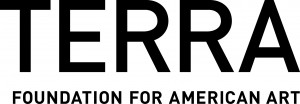
The Lettie Pate Whitehead Evans Exhibitions Endowment

The Julia Louise Reynolds Fund
National Endowment for the Arts
Mrs. Frances Massey Dulaney
Mr. and Mrs. John D. Gottwald
Ivan Jecklin and Allison Weinstein
Carole and Marcus Weinstein
The Anne Carter and Walter R. Robins, Jr. Foundation
Pam and Bill Royall
Mary and Don Shockey
Mr. and Mrs. Fred T. Tattersall
Robert Lehman Foundation
Free for VMFA members, children 6 and under, and active-duty military personnel and their immediate families.
$15 for adults
$12 for seniors 65+
$10 for college students
$10 for youth (7–17) and students with school ID
Tickets can be purchased online or by calling 804.340.1405.
Questions?
Contact Visitor Services at info@vmfa.museum
Artnews.com: Hatching Ideas: A Superb Exhibition at the Virginia Museum of Fine Arts Shows Jasper Johns Looking at Edvard Munch
In an age of prequels and sequels, the art of Jasper Johns fits right in. That’s one of the takeaways from “Jasper Johns and Edvard Munch: Inspiration and Transformation,” a compelling show currently on view at the Virginia Museum of Fine Arts, in Richmond. Ostensibly, it is about the abstractions Johns began executing in 1974 and the paintings, prints, and works on paper by Munch that may have inspired him, but it is also a welcome opportunity to take an extended look at some of the most challenging work Johns ever made. Read More.
WCVE-FM: Reflections On: Jasper Johns and Edvard Munch: Love, Loss and the Cycle of Life
Deborah Solomon, art critic for WNYC in New York and the author of an upcoming book on Johns, discussed the exhibition with WCVE’s Craig Carper. “It’s really a show about art DNA, and how Munch’s DNA influenced Johns, and … how artists borrow from one another and learn from one another and are always speaking to one another through their work.” Click here to hear the interview or read the transcript.
Hyperallergic: The Fateful Attraction of Jasper Johns and Edvard Munch
“Sometimes an exhibition, propelled by its clarity of purpose and emotional force, will lead you to a point that feels genuinely cathartic. And sometimes an exhibition will hit that mark and then shift into overdrive.” Read more.
Richmond Magazine: Johns + Munch = Surprises
“… artists working in the present dip into the past as one might lower hands into the flow of water. The ideas are the stream that the artist may ‘repeat, recycle, repurpose,’ for their own ends.” Read more.
Richmond Times-Dispatch: VMFA exhibit exploring Jasper Johns’ embrace of Edvard Munch’s art opens Nov. 12
“The two artists could not have been any more different. This exhibition traces the route Johns traveled to find what he needed in Munch’s work.” Read more.
Style Weekly: A Major New Exhibit at the VMFA Examines the “Why” Behind Jasper Johns and Edvard Munch
“What museum goers should find especially intriguing in ‘Love Loss and the Cycle of Life’ are the ways in which a great artist from one generation influenced a great artist of another generation.” Read more.
RVAmag.com: VMFA’s ‘Jasper Johns and Edvard Munch’ highlights uncanny connections between important painters in challenging new exhibition
“(Curator John) Ravenal’s pairing of the two has less to do with specific content of the images and more to do with linked aesthetic.” Read more.
The Wall Street Journal: Transformative Canvases
“A show that initially struck me as a speculative stretch of curatorial imagination ultimately convinced me that the Norwegian Expressionist’s oeuvre, as angst-filled and self-revelatory as the American’s was cool and detached, helped inspire Mr. Johns to drop his reserve.” Read More
Scream Sundays
Free tickets for select dates for Jasper Johns and Edvard Munch: Love, Loss, and the Cycle of Life. Read More






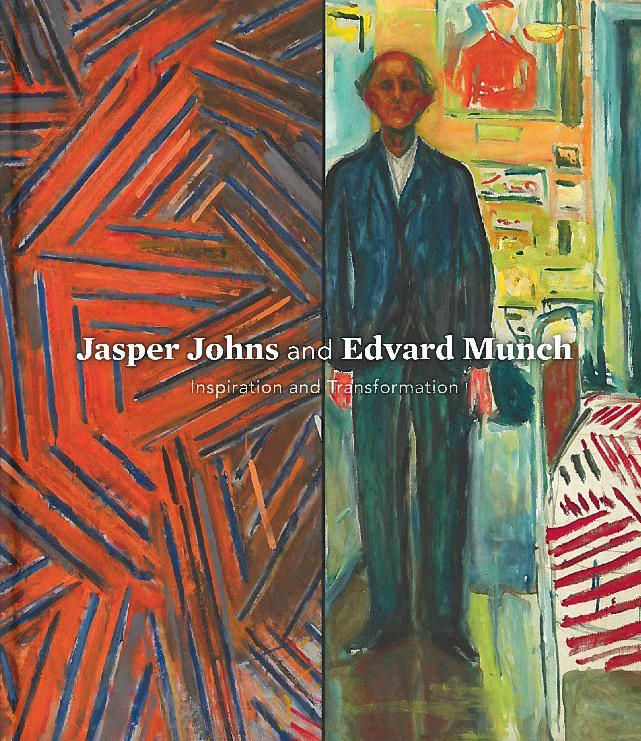
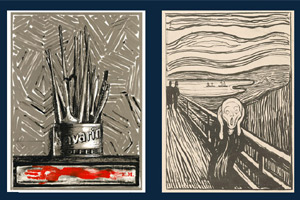 MEMBER PREVIEW DAYS
MEMBER PREVIEW DAYS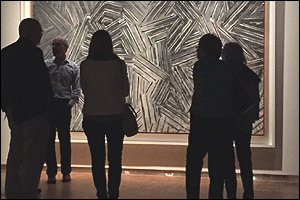 Jasper Johns and Edvard Munch: Inspiration and Transformation
Jasper Johns and Edvard Munch: Inspiration and Transformation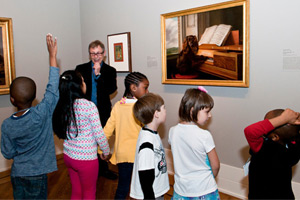
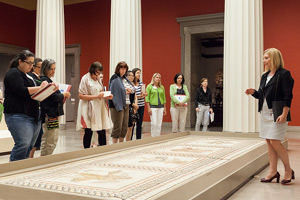
 Artistic Borrowings: Edvard Munch and Jasper Johns
Artistic Borrowings: Edvard Munch and Jasper Johns  Teacher Workshop: Jasper Johns and Edvard Munch: Reading Between the Lines
Teacher Workshop: Jasper Johns and Edvard Munch: Reading Between the Lines  Community Conversation: Art & Health
Community Conversation: Art & Health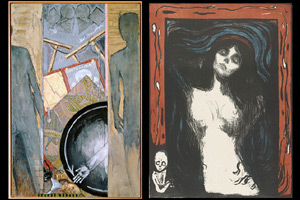 First Friday Pop Up: Ambiguous Images
First Friday Pop Up: Ambiguous Images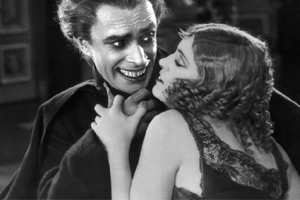
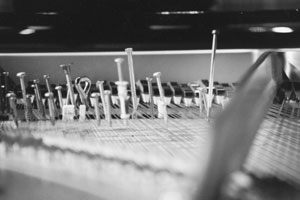
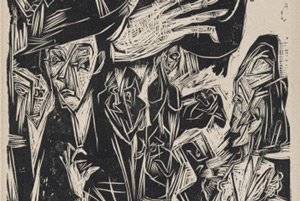
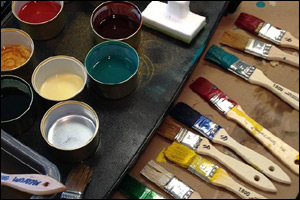 How…Do You Work with Encaustic?
How…Do You Work with Encaustic?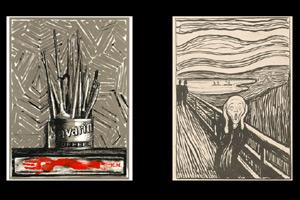 The Haunted Picture: Edvard Munch across Time
The Haunted Picture: Edvard Munch across Time